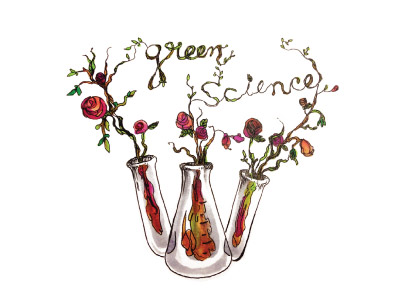The path to sustainable science achieved another milestone when chemistry professor Chao Jun Li and his team published their findings in Science Advances last week. The group have uncovered a way to convert aldehydes into carboxylic acids. However, unlike traditional synthesis methods, which use prohibitively expensive quantities of silver or carcinogenic chromium reagents, Li’s group developed a way to perform the reactions using small regenerative quantities of silver catalyst in water.
“We wanted to find a way to prevent the [silver] atoms from aggregating,” Li explained. “Then, air or oxygen gas can turn the silver atoms back into silver ions. Now, you have a very efficient catalytic system using tiny amounts of silver.”
To carry out this objective, Li and his group treated an ensemble of aldehydes with combinations of silver complexes and other starting material. Reaction parameters were designed to maximize the use of readily available materials by using oxygen from the atmosphere and water as the solvent. Using these conditions, along with mild reaction temperatures, they were able to achieve high yields of the carboxylic acid product. These reactions could be performed using milligram quantities of silver catalyst, thus fulfilling the initial hopes for the synthesis.
The work done by Li exemplifies an emerging approach to chemical research and synthesis that emphasizes the environmental impact of such processes. Green chemistry, as the field has become known, strives to use less toxic reagents, reduce chemical waste, and increase reaction efficiencies as part of several objectives that are designed with environment preservation in mind. Those involved in the field assert that all the tools needed to achieve these objectives are already available.
“Milling and grinding is probably the second oldest trade known to man,” explained McGill chemistry professor Tomislav Friscic, describing his research in solvent-free chemical synthesis. “Ancient [civilizations] made fire by rubbing wood and stone together. We are trying to find a way to combine this milling and grinding process with chemistry.”
Although seemingly straightforward, researchers are quick to point out that achieving the goals of green chemistry is not something that can be done overnight. Challenges still remain, such as optimizing heavy-scale industrial processes like the Haber-Bosch synthesis of ammonia. However, in light of the recent focus on environmental issues like climate change and developing renewable resources, the quest for greener protocols in research has become only more urgent. Even so, for many, the connection between greenness and chemistry, a field that generates five to 100 times more chemical waste than chemical product, is not immediately obvious.
“How many undergraduates go to a general chemistry lab and [ask], ‘How much electricity did I consume today running this fume hood?’ or ‘How much water did I use running this overnight reflux?’” Friscic asked.
This lack of awareness is something that those involved in green chemistry intend to counter. For green researchers then, one of the essential steps is the changing of conventional ways of thinking.
“People say that it’s not possible,” said Louis Do, a research assistant in Friscic’s lab. “[But] people in green chemistry have proved that anything is possible. It is just a matter of figuring out how.”
It’s this question of ‘how’ that makes findings like those of Li’s recent paper important stepping stones towards a more sustainable future in chemistry. The positive impact that such work has had on both science and society has provided encouragement for Li in his own endeavours.
“The most exciting thing is […] finding things that people have never seen before, [while] at the same time benefiting society,” explained Li.










Nice article!